It's all about the classical music composers and their works from the last 400 years and much more about music. Hier erfahren Sie alles über die klassischen Komponisten und ihre Meisterwerke der letzten vierhundert Jahre und vieles mehr über Klassische Musik.
Popular Posts
-
by Janet Horvath , Interlude Fans of Wolfgang Amadeus Mozart will likely be aware that he was taught, shaped, and influenced by his fath...
-
Witness the "𝗛𝗮𝗿𝗺𝗼𝗻𝗶𝗲𝘀 𝗼𝗳 𝗛𝗲𝗿𝗶𝘁𝗮𝗴𝗲: 𝗔 𝗦𝘆𝗺𝗽𝗵𝗼𝗻𝘆 𝗼𝗳 𝗣𝗵𝗶𝗹𝗶𝗽𝗽𝗶𝗻𝗲 𝗖𝗼𝗹𝗼𝗻𝗶𝗮𝗹 𝗠𝘂𝘀𝗶𝗰...
-
By Georg Predota, Interlude In the 1840s, the Parisian instrument builder Adolphe Sax provided a welcome addition to the family of woodw...
-
My personal list. There's so many more of these moments out there, it was tough to choose 10. Honorable mention for Bach, in part becaus...
-
Music video by Beegie Adair performing It's The Most Wonderful Time Of The Year (Visualizer).© 2024 Green Hill Productions Music 1 songs...
-
Sancta Staatsoper Stuttgart. Picture: Youtube By Will Padfield Naked nuns, live sex and real blood. If you were expecting a civilised night...
-
by Georg Predota Niccolò Paganini left an irrefutable mark on the history of instrumental music and 19th century social life. Born in Genoa ...
-
SOUNDS FAMILIAR - Baby A. Gil - The Philippine Star July 18, 2024 | 12:00am It was in 1963 when future National Artist for Music Andrea Ven...
-
193,674 views Premiered Dec 15, 2024 ITALY The Best of Vivaldi: Timeless Classical Masterpieces 🎻 🎼 Dive into the timeless world of cl...
-
BY ANTONIO C. HILA OCTOBER 16, 2024 Read Next From Chanel camellias to Chinese motifs Glorious operatic singing marked the culminating con...
Friday, February 14, 2025
Morissette - LOVE THE PHILIPPINES (Official Music Video)
Widowhood and a Murder: Dvořák’s Holoubek
by Maureen Buja, Interlude
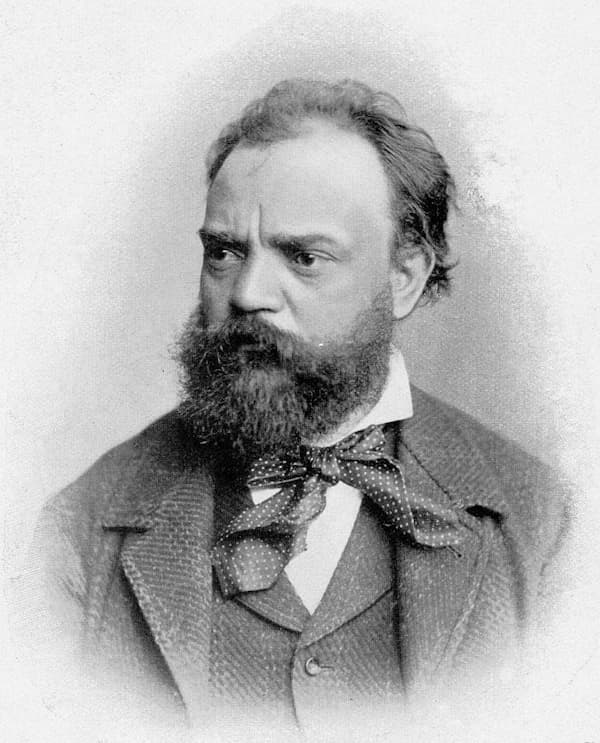
Antonín Dvořák, 1882
This development of the symphonic poem, all based on one literary source, was not unprecedented for Dvořák. Earlier works had literary elements, the most familiar perhaps being in his works written in America (the New World Symphony and the American Quartet).
The Garland, or, to give it its full name, The Garland of National Legends, was a cycle of 13 ballads. Holoubek, or The Dove (The Wood Dove, the Wood Pigeon) story starts in a graveyard. A widow mourns her recently departed husband and is seen by a passing youth (handsome, of course). After three days of resistance, she accedes to his demands and in a month they are married. The story then turns – she’s a widow because she gave her first husband a deadly potion so she could marry the handsome youth, and then at the end of the poem, after 3 years with her new husband, the sound of the dove, cooing in the oak tree over her first husband’s grave, drives her to suicide.
The tone poem opens with a funeral march, with a recurring march-beat of the funeral procession under the melodies. The flutes and violins bring in the young widow, but the following subject, on oboe and trumpets, belies the presented innocence. The widow’s tears, sarcastically presented in the flutes and violins, are another indication of her false heart. The handsome young man is signalled by a distant trumpet. The funeral march continues, but in a more spritely manner – perhaps the inconsolable widow is approachable after all!
The central section is the wedding of the widow and her new husband.
In the final section we return to the graveyard and the mournful call of the dove in the oak tree above the husband’s grave. Dvořák gives this an eery setting with harp and strings, wailing flutes, and a crying oboe. The widow / bride is driven to remorse and drowns herself, and the funeral march returns at the end. Although Erben’s poem ends with a pitiless description of her grave – no tombstone and her head laid only on a rock, buried in the middle of a field – Dvořák gives us an optimistic ending with a return of the dove’s song and the minor key turned to major one.
Antonín Dvořák: Holoubek, Op. 110, B. 198
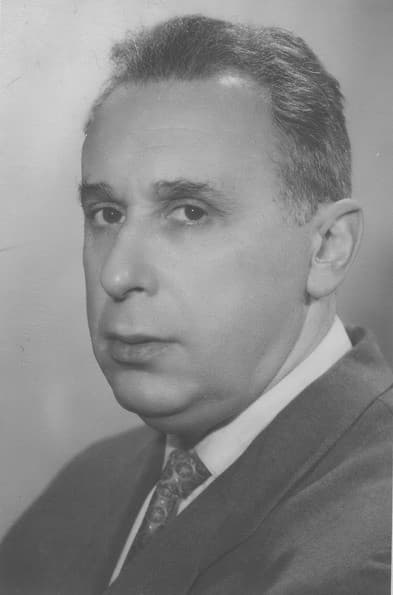
Nikolai Ravinovich
This recording was made in 1954 with Nikolai Rabinovich conducting the Leningrad Philharmonic Orchestra.
Nikolai Rabinovich (1908–1972) graduated from the Leningrad Conservatory in 1931 and was appointed professor of conducting there in 1968. His students included Yuri Simonov, Neeme Järvi, Vladislav Chachin, Vitaliy Kutsenko, and Victor Yampolsky, all of whom had exemplary conducting careers.
The Leningrad Philharmonic Orchestra, now the Saint Petersburg Philharmonic, was founded in 1802 and started as the orchestra for the Court of Alexander III of Russia. Its period of greatest achievement occurred under the leadership of Yevgeny Mravinsky, who led it for 50 years (1938–1988). This saw its first tours to the west and the start of their studio recordings. Under Mravinsky, the orchestra recorded seven of Shostakovich’s symphonies.
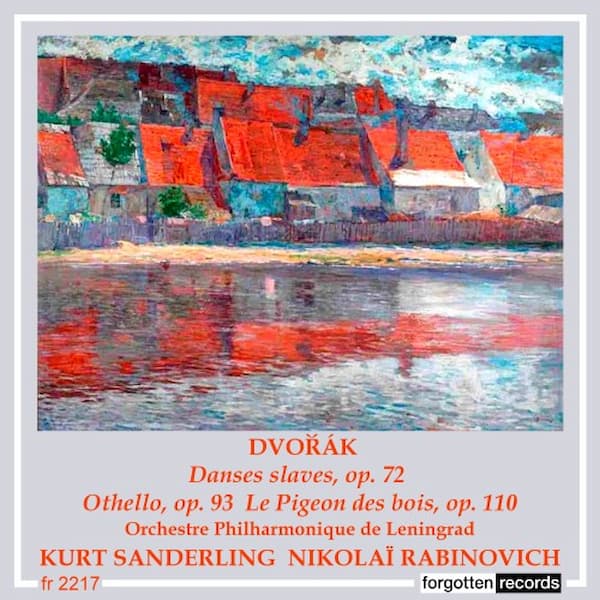
Performed by
Nikolai Rabinovich
The Leningrad Philharmonic Orchestra
Recorded in 1954
Official Website
For more of the best in classical music, sign up for our E-Newsletter
Buried Treasures: Felix Mendelssohn: Concerto for Piano, Violin and Strings in D Minor (1822)
by Georg Predota, Interlude
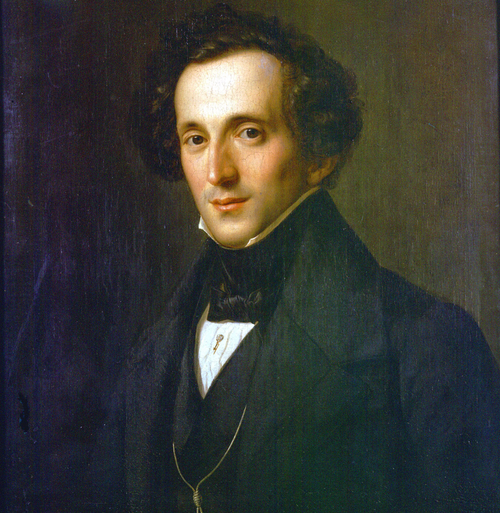
Felix Mendelssohn
When Felix Mendelssohn (1809-1847) died at the incredibly young age of thirty-eight, he simply had not yet made arrangements for literally hundreds of unpublished musical manuscripts and artworks, alongside thousands of personal letters to and from the composer. During his lifetime, and for a short period thereafter — with a large number of music published during a period of two years following his death — Mendelssohn was almost universally lauded musical genius. What is more, Mendelssohn was also the artistic director and chief conductor of The Gewandhaus (Garment House) in Leipzig, a venue that has long been recognized as one of the most important performing centers in Europe. Under his tutelage and leadership, the Gewandhaus Orchestra became a cultural institution. Mendelssohn not only initiated the revival of music by Bach, Handel, Haydn and Mozart, he also assured that his brand of musical historicism was disseminated throughout Europe and beyond. With the help of Richard Wagner who declared “Judaism the evil conscience of our modern civilization” in his 1850 treatise Judaism in Music, Mendelssohn and his music were quickly subjected to deliberate and systematic forms of historical revisions. And when Wagner declared Mendelssohn’s music “an icon of degenerate decadence,” publishers far and wide declined to make his manuscripts and letters public.
Of course, Wagner was not able to completely erase or dismiss Mendelssohn’s influence on Germanic arts, nor was he able to excise him from music-historical memory. This, of course, led to serious irritation within the propaganda machinery of Nazi Germany, and his name was promptly added to various lists of forbidden artists. At that time, according to Stephen Somary, founder and artistic director of the Mendelssohn Project, “a majority of Mendelssohn manuscripts — both published and unpublished — were housed in the basement of the Berlin State Library. They were smuggled to Warsaw and Krakow during the winter of 1936/37, and when the city fell under Nazi control in 1939, they were hurriedly smuggled out again and disbursed to locations wide and far between.” Following WWII, the majority of manuscripts remained buried behind the Iron Curtain. Haltingly, various unknown versions and unknown compositions were discovered and made available in one form or another.
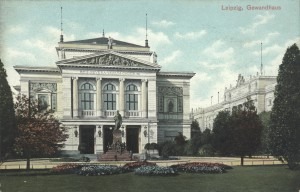
The Gewandhaus
Initially, these efforts focused on works Mendelssohn composed before his 14th birthday, pieces that had originally been presented at private concerts at the Mendelssohn home. Among them various sonatas for viola and for violin, religious choral music, numerous piano compositions and even a fourth opera. But it also included a succession of concertos, among them a concerto for piano and string orchestra in A minor (1822) and two concertos for two pianos and full orchestra in E and A-flat, originating from 1823 and 1824, respectively.
The concerto for violin, piano and string orchestra in D minor was composed for an initial private performance with his best friend and violin teacher Eduard Rietz. On 3 July 1822, Mendelssohn revised the scoring, adding timpani and winds and the premiere of this version was apparently performed on the same day. For reasons detailed above, it remained unpublished until 1960, when the Astoria Verlag in Berlin issued a miniature score, edited and arranged by Clemens Schmalstich. In 1966, Theodora Schuster-Lott and Frieder Zschoch prepared a scholarly edition for the Deutsche Verlag für Music as part of the new Mendelssohn complete edition, “which was engraved, but never published except in a reduction by Walter-Heinz Bernstein for violin and two pianos.” Finally, in 1999 the 1960 miniature score was reissued in a scholarly edition with the wind and timpani parts added. And just in case you are wondering, the A-minor Piano Concerto of 1822 had until recently been unavailable in any edition, and the Concerto for two pianos and orchestra in E major, composed as a birthday gift for his sister Fanny, had to wait until 2003 before audiences could get a listen to the original version.
And just in case you are interested in all the works and versions by Felix Mendelssohn, they are now available to the general public and performing artists, have a quick look at this link!
Tuesday, February 11, 2025
Beethoven - Symphony No. 7 (Proms 2012)
Reminisce and cherish those memories of love
Reminisce and cherish those memories of love through the songs of your life this Valentine's Day.
Friday, February 7, 2025
Music and Bows and Clothes: Oh My!
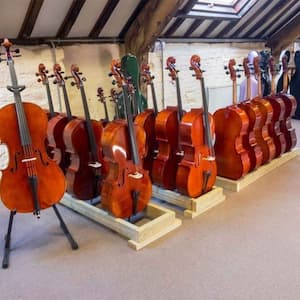
© Bass Bags
It’s hard to believe how many hilarious behind-the-scenes mishaps we musicians experience. Afterwards, once we’ve recovered from the embarrassment, we love to share these stories at parties!
My friend cellist Clay Ruede recently told me this one: He was playing a show on Broadway and he kept a cello at the theater. One Sunday the orchestra was advised that heavy storms were on their way and the theater basement could flood. It would be wise if the musicians removed their instruments from the lockers as a precaution. Clay took his cello home. The following Tuesday, the musicians gathered for the next show and chatted backstage while waiting for the “places” call. When the loud speakers announced, “Places please. Musicians, places,” Clay went to his locker but the cello wasn’t there. It was still at home. Thinking quickly, he ran out to a nearby music shop, he purchased a cheap cello, and got back to the theater and his seat just in time for his first solo. After the show Clay returned the cello for a full refund.
A couple of years later, Clay performed for a different Broadway musical. Just before Showtime a violinist in the orchestra called in a panic that there had been an accident on the highway. Frantic she would be late, she admitted that she’d also forgotten to bring her violin. Clay told her not to worry. He knew what to do! He left the theater, bought a violin for her at the same music shop, and placed the tuned violin and a bow on her chair. The violinist made it just in time for the performance.

© Violinist.com
Forgetting bows or instruments is more common than you might think! Another colleague described how many times his gear enjoyed traveling without him. Roland Hutchinson mentioned how his baryton bow once failed to get off the bus in Eisenstadt (not its fault) and the bow went on to Vienna without him. Fortunately, the bus line found the bow and it was returned without incident before the performance. Another time one of his viols “forgot” to get off the airplane in California and on it went to Hawaii (the airline’s fault). The carrier delivered the instrument to Roland by van the following day. When traveling to South Africa another colleague also left her bow on a plane. Upon reaching the baggage claim area she suddenly remembered the forgotten bow and in a panic raced back to the gate where she found the entire crew gathered around the long box. Lost in speculation they were trying to guess what this mysterious box contained: a flute? A pool cue? Some type of narrow rifle? A baguette?
Losing instruments happens on tour too! Gill Tennant recalls when her youth orchestra traveled to Moscow. An entire tranche of instruments went directly to Moscow but the group first had a concert in Copenhagen where the musicians disembarked. Oops! Fortunately, Copenhagen’s youth orchestra members were able to lend their instruments for the concert. The timpanist wasn’t too happy. The Copenhagen counterpart didn’t have any timpani. This is especially problematic in the fourth movement of Shostakovich Symphony No 5. The timpanist had to stand on a stool to bang on an enormous 15-foot-tall side drum.
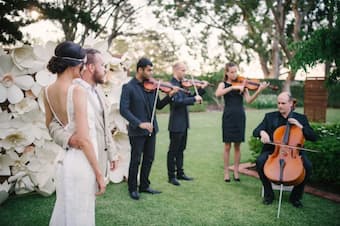
© Orquestra Imperial
Forgetting music is a classic faux pas. Fortunately, many musicians have phenomenal memories at times like these but forgetting where you’re supposed to be going is another story. Freelancers who often have to travel to several different venues find this a frequent mishap. Imagine the chagrin. A colleague played an entire wedding gig. When she asked the bride’s father for payment he was puzzled. They hadn’t booked any musicians. He’d actually thought it was such a nice perk that the venue provided a string player. Meanwhile at the same venue another wedding party wondered what happened to the musician they booked.
It’s easy to show up at the wrong hall. A colleague realized her error and had to walk a half mile on a hot afternoon across town wearing her long black dress and high heeled shoes and of course carrying, a music stand, music bag, and the cello. She made it to the performance on time.
Wardrobe failures plague us too. I remember wearing a lovely sheer cream and rose-colored dress for a chamber music concert. The bright stage lighting shone from behind us. My chamber music partners leaned toward me and whispered that the audience could see right through my skirt. They accommodated this turn of events by standing directly behind me while we exited the stage, trying unsuccessfully to keep a straight face. We’d hoped the Charles-Marie Widor Piano Quartet in A Minor Op. 66 would be alluring but not that alluring!
Years ago, Clay’s trio was about to make its Washington, DC debut at the Philips Gallery. The Gallery was being renovated, so the concert had to be held at a different venue. There the stage was 8 feet above the audience with the “backstage area” located behind the audience. The musicians had to walk through an aisle in the center of the audience and up a staircase in the middle of the stage to get into playing position. For the Sunday afternoon concert the musicians wore suits and not their customary tails. Clay’s cello was lying in its case on the floor of the so-called “green room.” When he bent over to pick up the cello he heard an embarrassing riiipppp. His pants split all the way from the waistband in the back to the zipper in the front. The pianist sprang into action and followed Clay very closely as they marched back and forth through the audience. Despite everything they got a rave review in the Washington Post, and in hindsight, he said, he was much cooler playing the concert with the additional ventilation.




